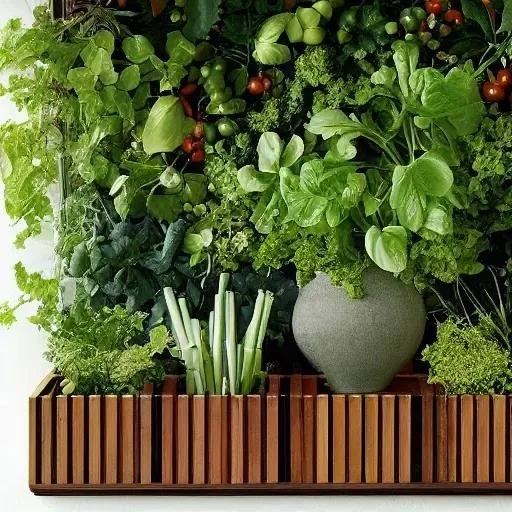In an increasingly urbanized world, where green spaces are a cherished luxury and traditional gardening plots often remain a distant dream, a quiet revolution is burgeoning. This isn’t about sprawling acres or vast farmlands; it’s about reimagining cultivation, transforming even the most modest balconies and compact courtyards into vibrant, productive oases. Welcome to the exhilarating realm of vertical vegetable gardening, a paradigm-shifting approach that promises bountiful harvests and unparalleled efficiency. It’s a testament to human ingenuity, proving that with a little creativity, anyone can become a prolific grower, defying spatial constraints with remarkable grace.
The allure of vertical gardening extends far beyond mere space-saving. Imagine a garden where pesky feline invaders can no longer treat your precious vegetable patch as their personal litter box, a common frustration for many ground-level gardeners. Picture a system that naturally enhances airflow around your plants, drastically reducing disease susceptibility and fostering incredibly healthy growth. This innovative method elevates your greens, literally, making harvesting a joy rather than a back-breaking chore. By integrating insights from cutting-edge horticultural science and time-honored principles, vertical gardening empowers individuals to cultivate fresher, more organic produce right at their fingertips, fostering a profound connection with their food source.
| Aspect | Description |
|---|---|
| Core Concept | Growing plants upwards, utilizing vertical space for maximum yield in minimal footprint areas. |
| Key Benefits | Space maximization, enhanced plant health (better airflow, fewer pests), easier harvesting, aesthetic appeal, sustainable water use. |
| Suitable Plants | Vining crops (tomatoes, cucumbers, peas, beans), leafy greens (lettuces, spinach), herbs (basil, mint, thyme), strawberries, nasturtiums. |
| Common Structures | Trellises, stacked planters, wall-mounted containers, hanging baskets, tower gardens, DIY structures (pallets, straw bales). |
| Essential Tips | Ensure adequate sunlight (6+ hours), anchor structures securely, provide consistent watering, enrich soil with organic matter, consider companion planting. |
| Reference | Gardener’s World — How to Grow a Vertical Garden |
For those grappling with the perennial challenge of limited square footage, vertical gardening presents not just a solution, but an exciting opportunity. Renowned container gardening expert Mark Ridsdill Smith, often cited for his invaluable advice on maximizing small spaces, frequently champions vertical approaches. His philosophy underscores that a garden’s potential isn’t measured by its breadth but by its vertical ambition. Echoing this sentiment, Amy Andrychowicz, author of “Vertical Vegetables,” meticulously demonstrates how simple projects can dramatically boost yields, turning overlooked walls and fences into thriving edible landscapes. It’s a remarkably effective strategy for urban dwellers, transforming concrete jungles into verdant havens.
Implementing a successful vertical garden requires a thoughtful approach, beginning with intelligent design and strategic plant selection. Consider sun exposure; most vegetables demand at least six hours of direct sunlight daily for optimal growth. Positioning your vertical structures in a full-sun location, ideally sheltered from strong winds, is paramount. For instance, vining crops like robust runner beans or indeterminate tomatoes, given sturdy trellises or robust garden netting, will gladly ascend, producing an abundance of delicious fruit. Herbs such as fragrant basil, invigorating mint, and aromatic thyme flourish in wall-mounted containers or stacked planters, providing convenient access for culinary adventures.
Beyond the foundational structures, creative ideas abound for enhancing your vertical space. Incorporating flowering plants like vibrant nasturtiums alongside your vegetables not only adds aesthetic charm but also acts as a powerful magnet for beneficial pollinators, boosting overall garden health. For indoor setups or shaded balconies, judiciously placed solar-powered grow lights can supplement natural sunlight, ensuring continuous, vigorous growth. By selecting high-quality organic matter to enrich your growing medium, you’re providing your climbing vegetables with the essential nutrients they need to push strongly upwards, ensuring a rich, flavorful harvest.
The true genius of vertical gardening lies in its adaptability. Whether you’re utilizing simple wooden stakes and twine for support, constructing elaborate lattice panels, or even repurposing straw bales into innovative growing towers, the possibilities are virtually limitless. This approach not only conserves precious ground space but also significantly improves air circulation around individual plants, a natural deterrent against common pests and diseases. Moreover, the elevated nature of these gardens makes routine tasks, from watering to harvesting, significantly less strenuous, inviting even those with physical limitations to partake in the joy of cultivation.
As we look towards a future demanding more sustainable and localized food systems, vertical vegetable gardening stands as a beacon of innovation and hope. It’s an empowering movement, transforming every small patch, every balcony, every wall into a canvas for growth. By embracing these ingenious vertical gardening tips, you’re not just growing vegetables; you’re cultivating a healthier lifestyle, a deeper connection to nature, and a more resilient future, one delicious, sky-high harvest at a time.






